Department of Mechanics of the Milan Polytechnic
We asked the Department of Mechanics of the Politecnico di Milano, in the person of Prof. Francesco Braghin, to measure the stresses to which an Olympic barbell is subjected during the main exercises: bench press, deadlift, squat, snatch and momentum. The lens is extremely practical; define multiplicative coefficients, simple and usable, however approximate, useful to the athlete in considering the stress of the discs loaded on the barbell with respect to the exercises performed.
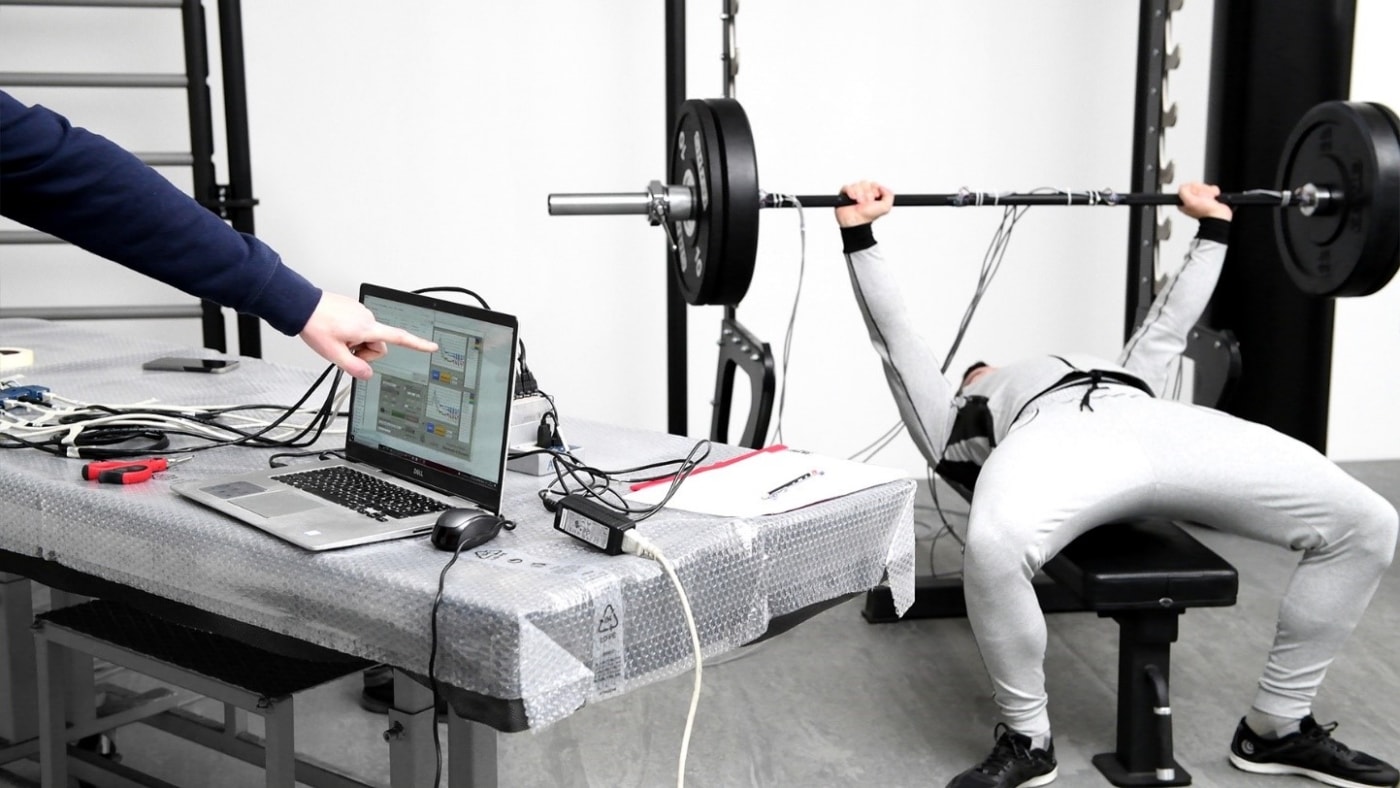
The activity consisted in the “sensorization"of 3 different models of Olympic barbells; 9015/4, 9015/5, 9015/9by the technicians of the Department of Mechanics of the Milan Polytechnic enabled for the bonding of strain gauge sensors.
Considering that the bending stresses on the rocker arm derive from:
- by the weight forces at the two ends, corresponding to the weight of the sleeves and weights;
- by the forces exerted by the athlete's hands to lift the barbell
it was deemed necessary to instrument the bar in 4 different sections:
- two sections at the end of the rocker arm, i.e. the closest possible point to the sleeve, compatibly with the dimensions of the strain gauge and the relative electrical connections; these sections are then between the sleeve and the athlete's grip.
- two sections in correspondence with the center of the barbell and symmetrical with respect to it, i.e. within the athlete's gripping points; for all instrumented balance wheels, the distance between these sections was taken as 360 mm.
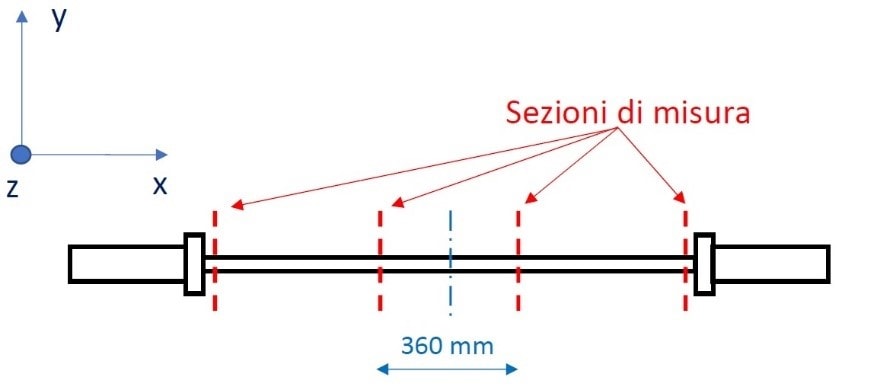
Being interested only in the bending of the balance wheel, it was possible to create a system for measuring the deformations using two complete strain gauge bridges for each section:
- No. 1 complete bridge along the horizontal plane (XZ);
- No. 1 complete bridge along the vertical plane (XY).
The use of complete strain gauge bridges, made with two orthogonal strain gauges placed on the two generatrices of the balance wheel belonging to a diametral plane, has made it possible to make the measurement insensitive to axial action and temperature variations. The figure shows the diagram relating to the positioning of the strain gauges on the measurement section. Each blue patch in the figure contains the pair of orthogonal strain gauges described above.
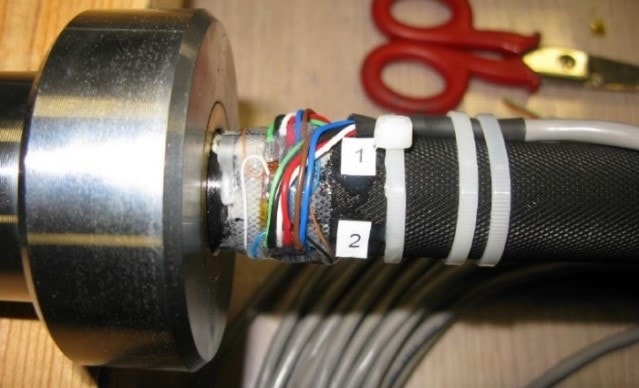
In total, therefore, 8 10-metre long cables branch off from each balance wheel (in order to allow the athlete sufficient comfort) corresponding to the 8 measurement channels (flexion along two directions for four measurement sections).
A simple test was performed to zero the strain gauge bridges: the balance wheel was placed in a vertical position (i.e. the position corresponding to zero bending moment on all four measurement sections), the output of the bridges was measured (offset ) and this value was then subtracted from the measurements that will be carried out.
Each test was acquired at a sampling frequency of 5 kHz, in order to measure, in addition to the stresses due to the athlete's gestures, also those of an impulsive nature due, for example, to the fall of the barbell on the ground.
Conclusions:
From the tests carried out on the three balance wheels, it was possible to note what was legitimate to expect: the more dynamic exercises, with greater accelerations, determined the highest stress values. Obviously maximum stress extended to all the sensors, in the event of a fall of the balance wheel, even if in this case the maximum values of deformation were very different from each other as a consequence of the way in which the balance wheel hit the ground.
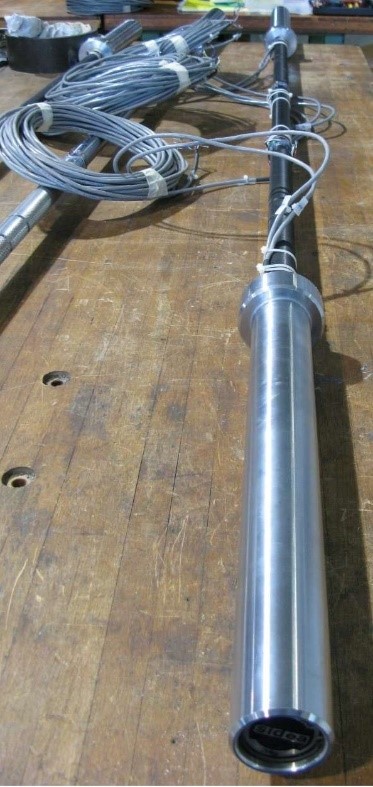
As regards the definition of the multiplicative coefficients, the test highlighted:
- jerk and momentum x 3,0
- squat (squat) x 1,8
- bench press x 1,7
- deadlift x 1,5
Therefore, considering for example the snatch and cleanse exercise, 100 kg of discs loaded on the Olympic barbell will exert a weight force corresponding to 300 kg.
Beware of falling from above! The multiplication coefficient was equal to x 3,25 but as we have said it is subject to various variables.
Also pay attention to the execution of the exercises. During the test we stuck to "standard" executions, or as standard as possible. Squats and deadlifts, but also bench presses, can be performed with high accelerations, in an explosive way, and this inevitably raises the multiplicative coefficients.

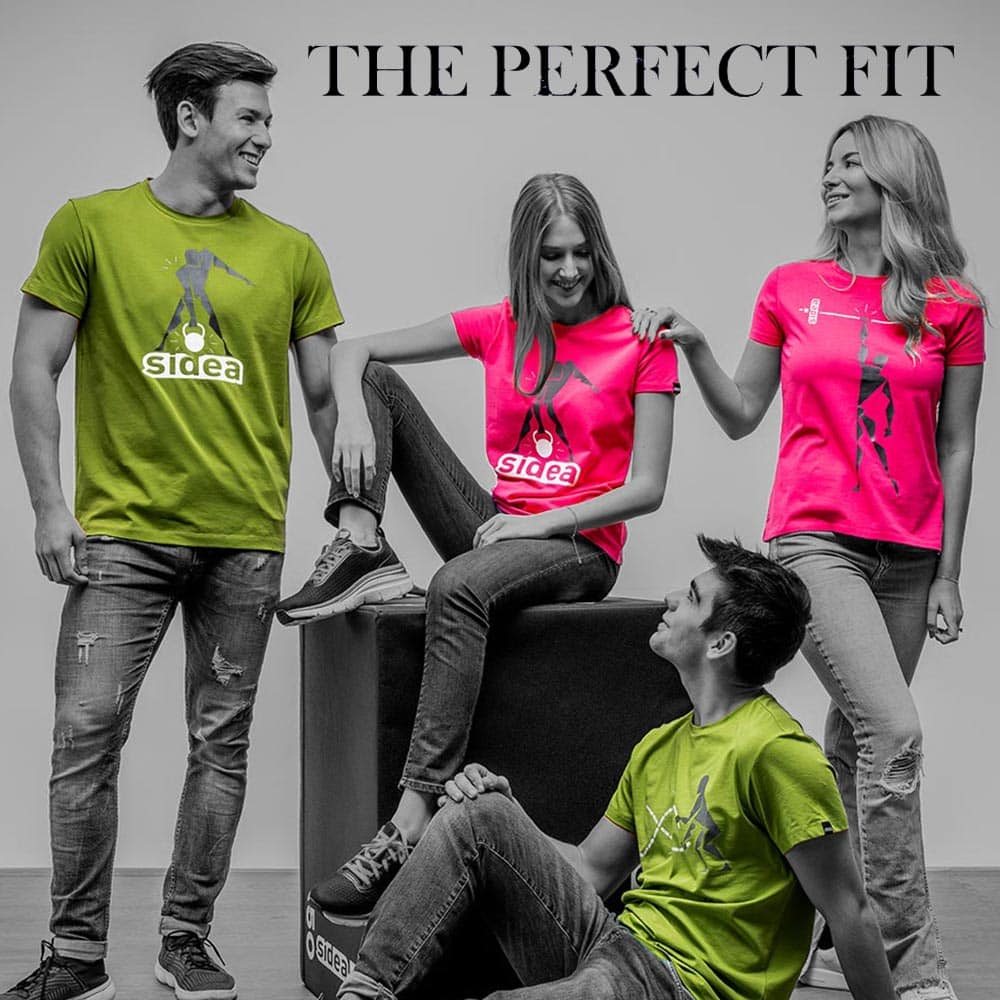


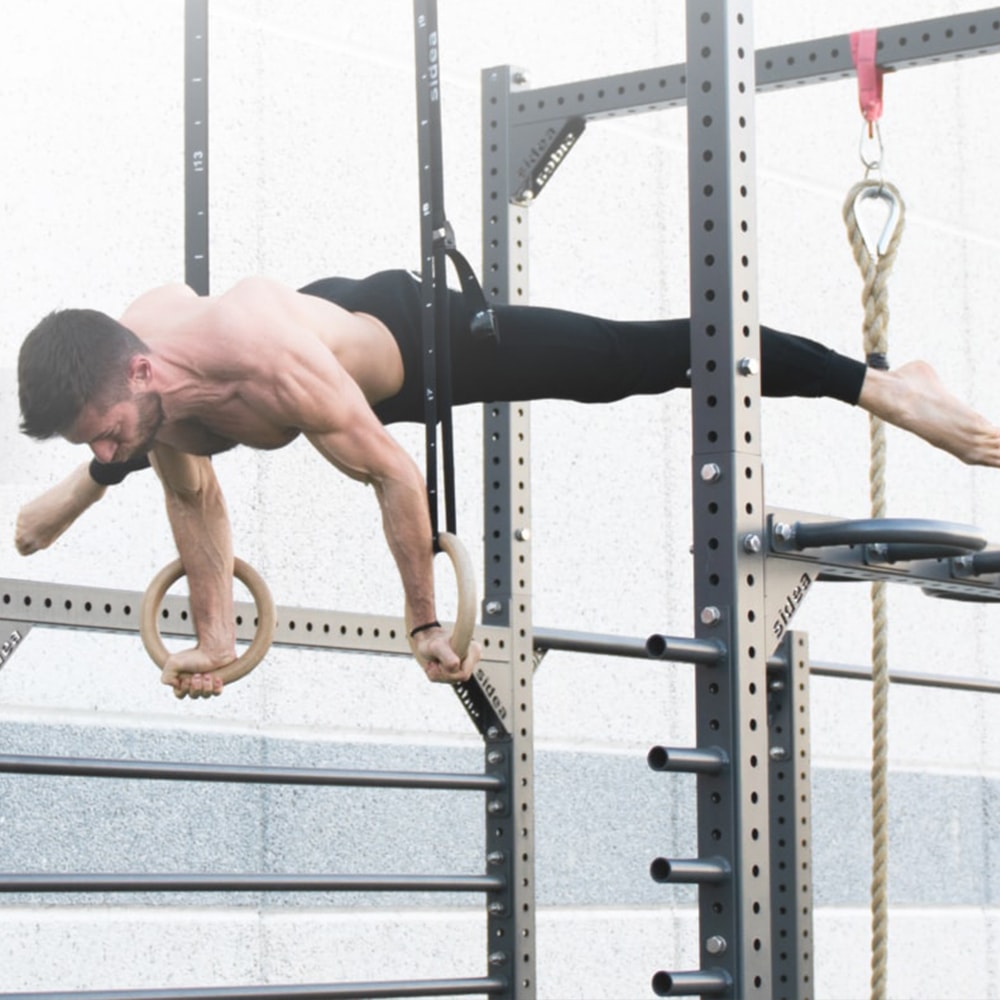
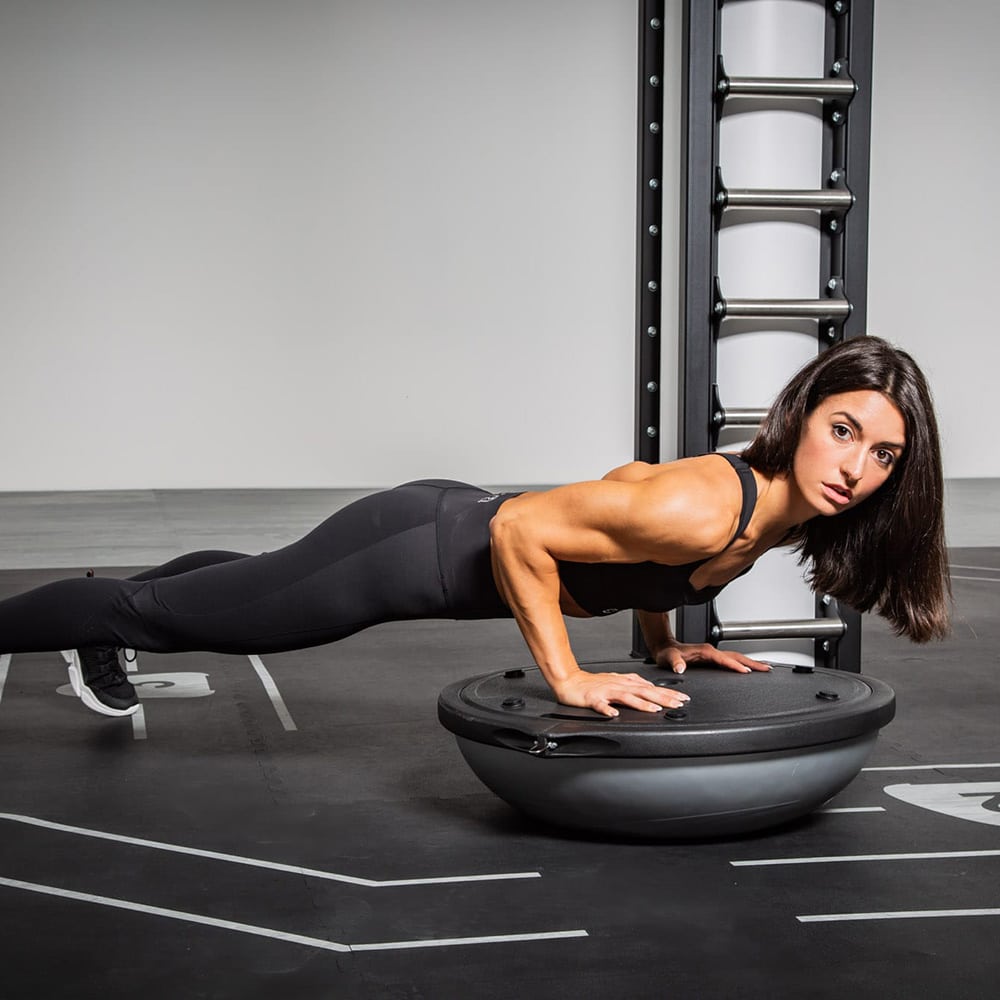

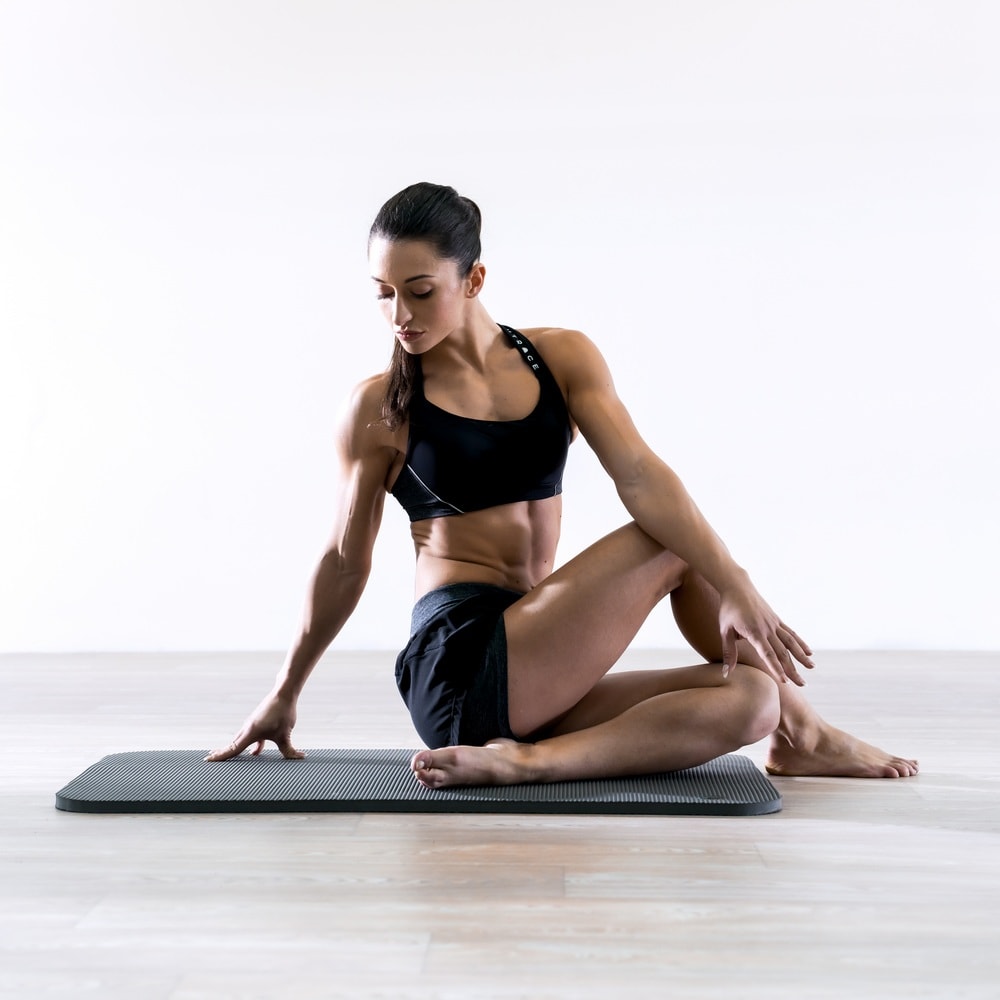
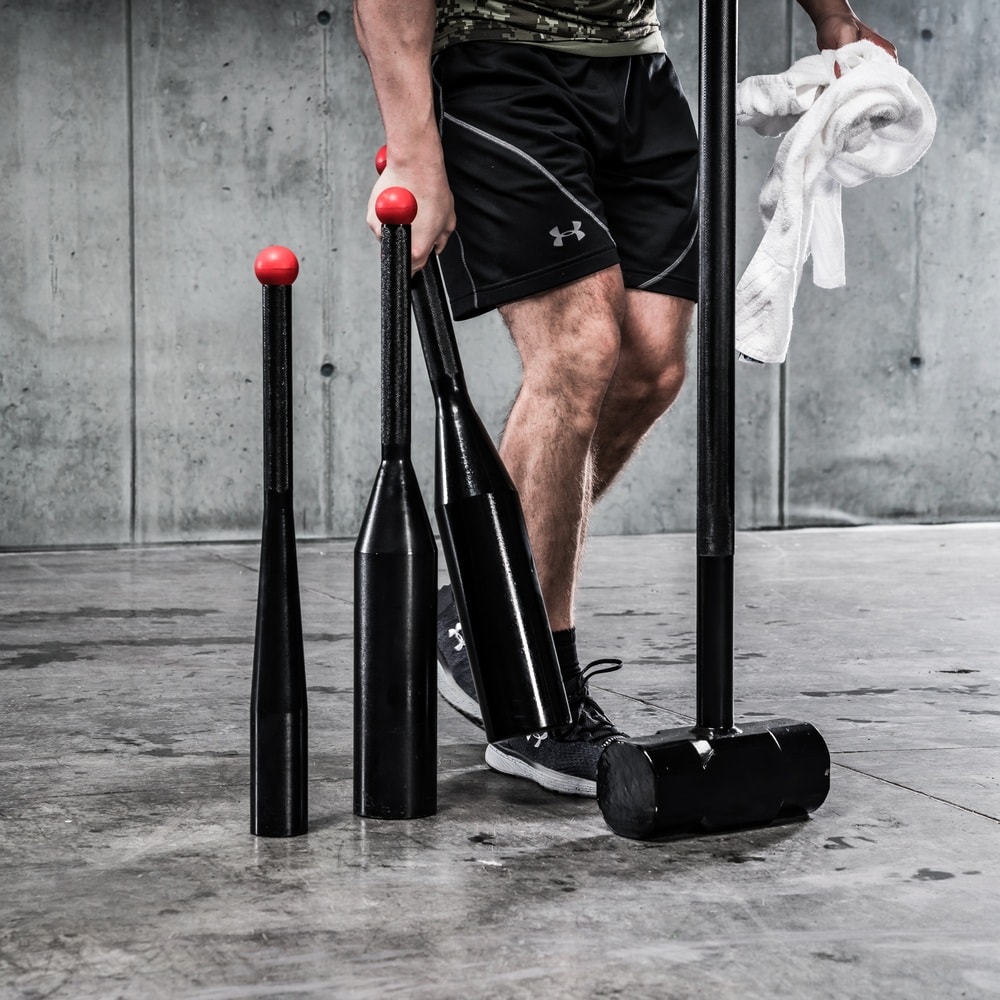
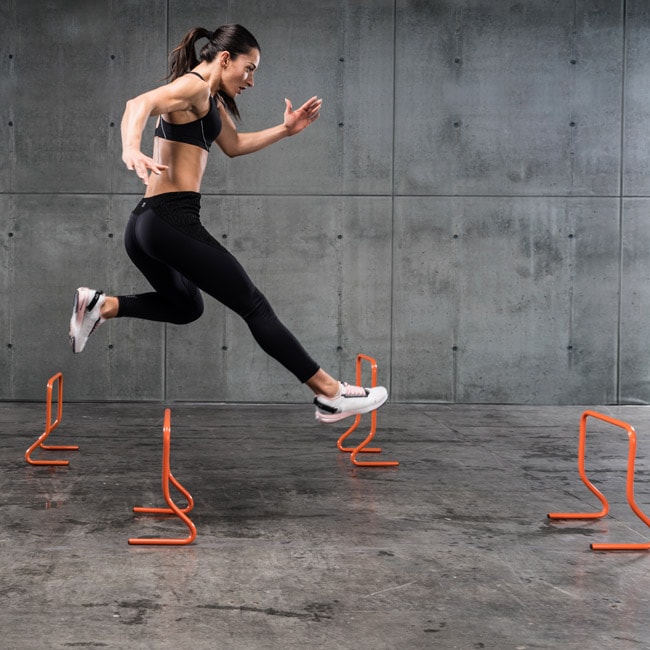
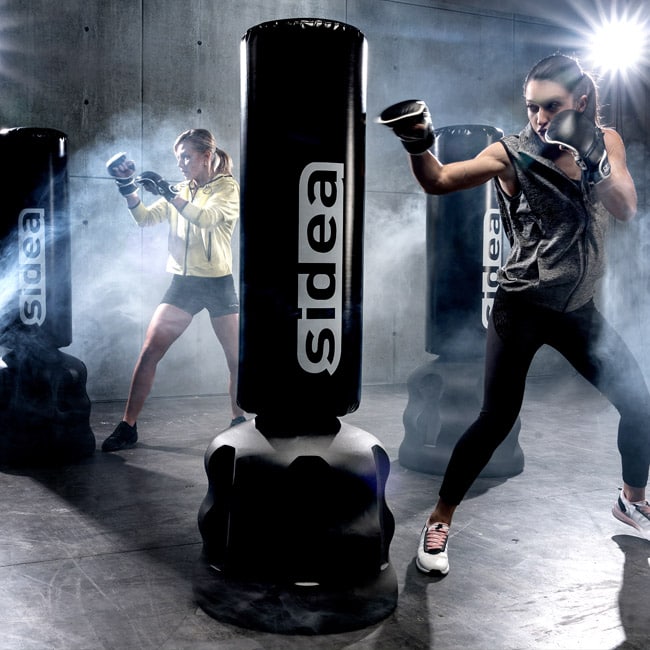
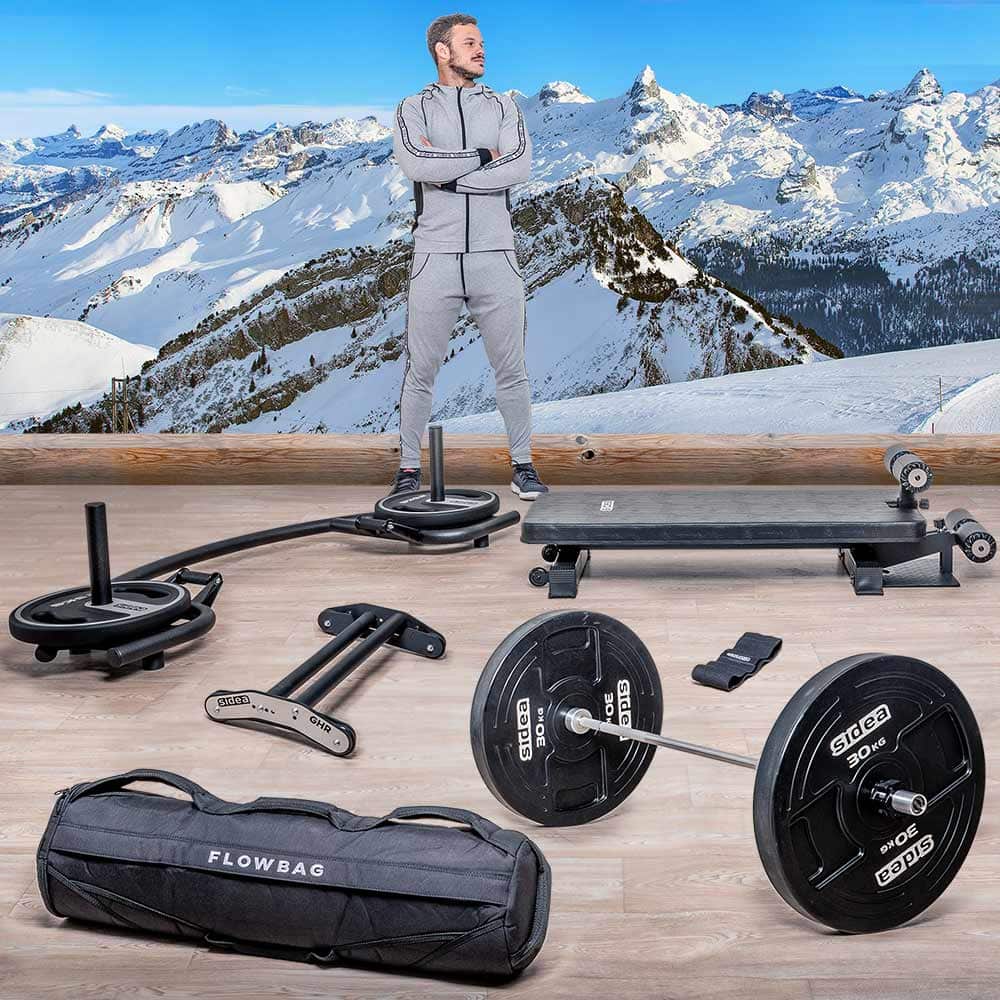
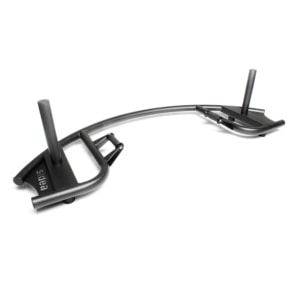
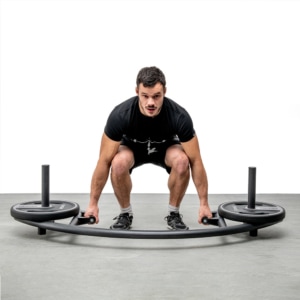
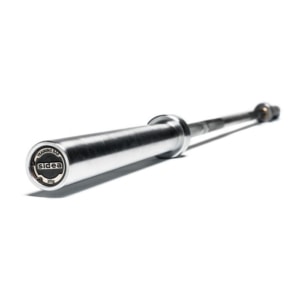
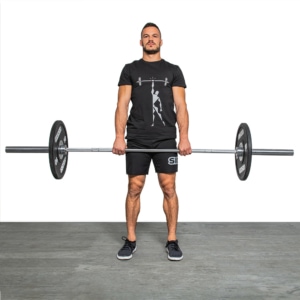
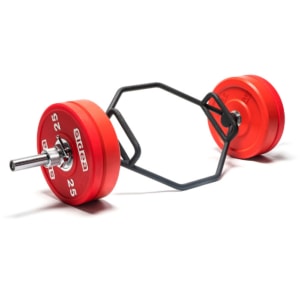
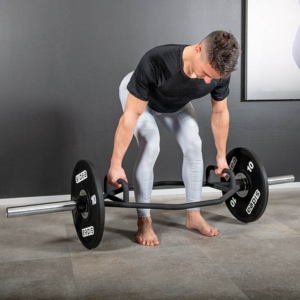
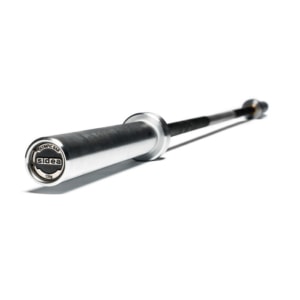
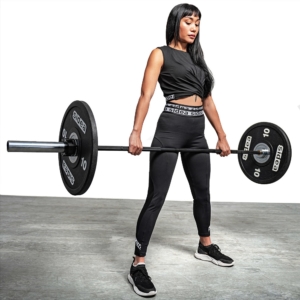
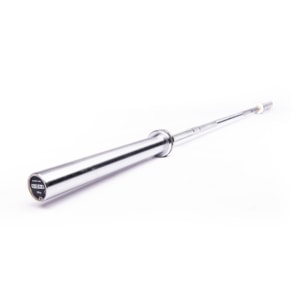
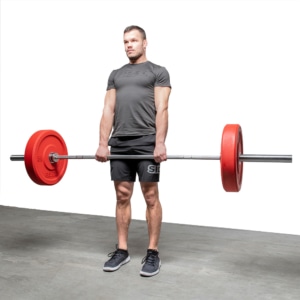
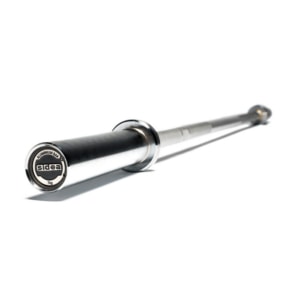
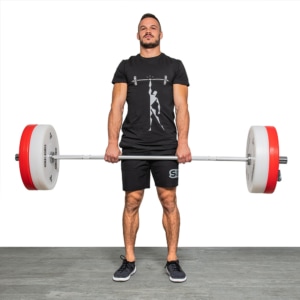
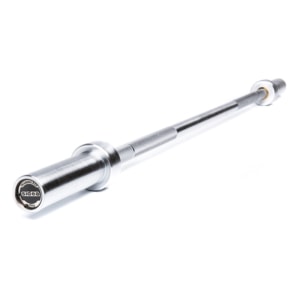
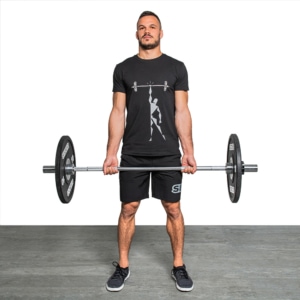
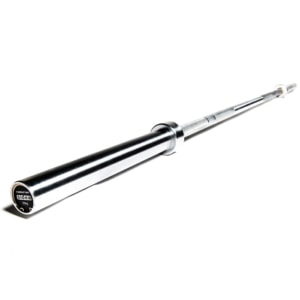
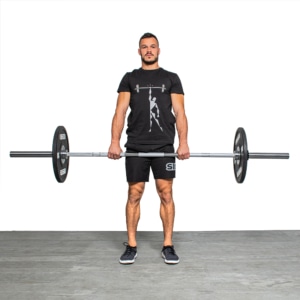
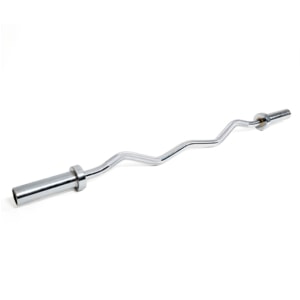
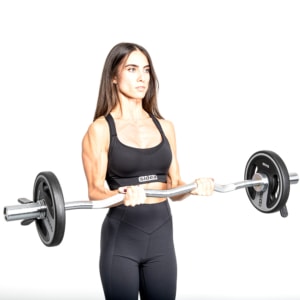
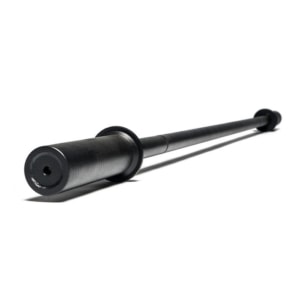
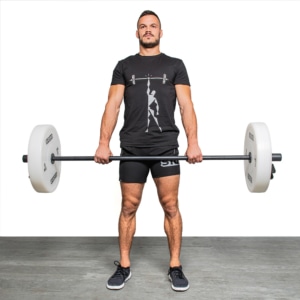
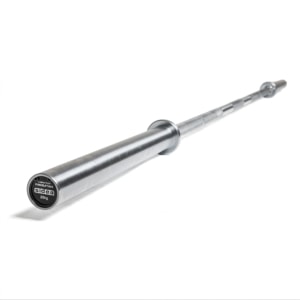
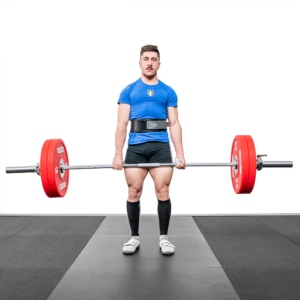
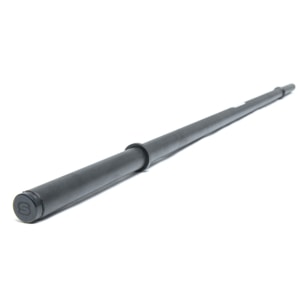
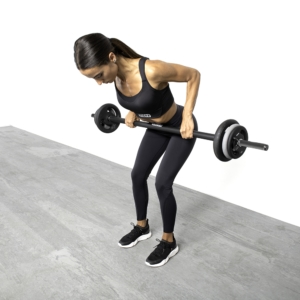
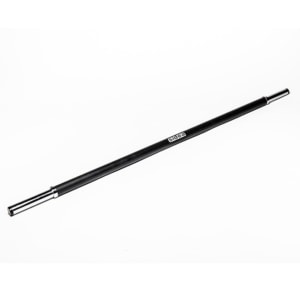
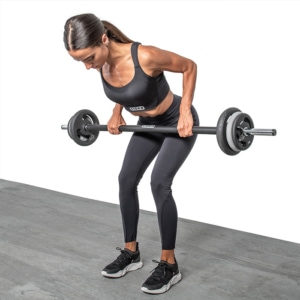
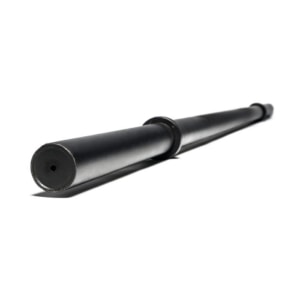
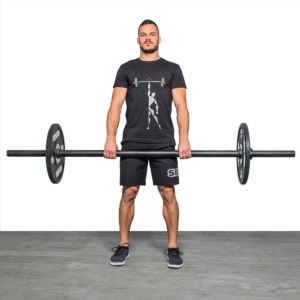
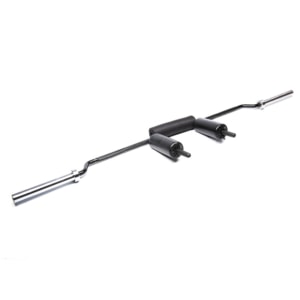
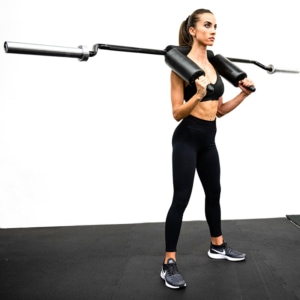
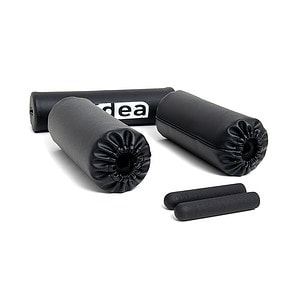
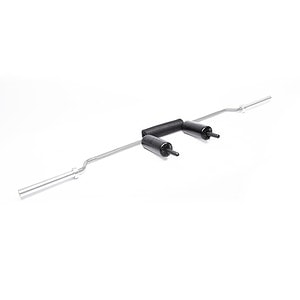
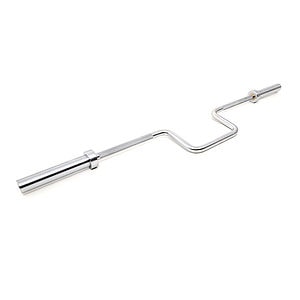
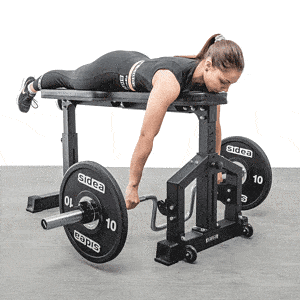

The study on the stresses to which the rocker arm is subjected during the effort test is very interesting, but what interests us the most are
the variations of the athlete's body during the power lift, i.e. knowing the timing and where and up to where an athlete can go with a given
muscle morphology, applying the electrodes connected to the computer, prepared with a particular software for the occasion.
Thanks for the comment Domenico, your suggestion is interesting.
The study described in the article concerns the stresses to which an Olympic barbell is subjected during the main exercises.
It is part of a larger work aimed at the production of balance wheels and which has highlighted the possibility of defining practical multiplicative coefficients.
The study you suggested is a different thing, it has the athlete as its object.